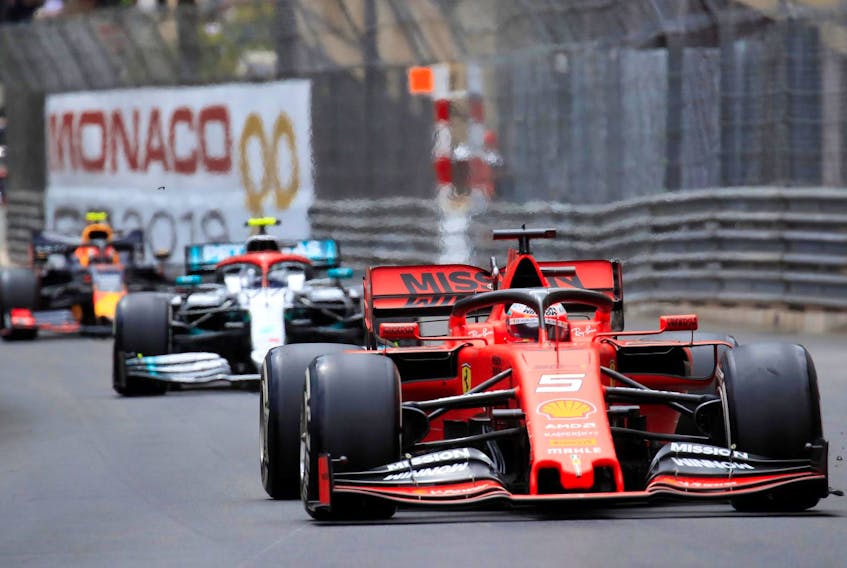All gasolines contain the basic C8H13 carbon/hydrogen molecules but there are big differences in fuel additives and chemistry. Formula 1 racing is one of the places where fuel chemistry can make huge advances.
Formula 1 rules specify that the fuel must be composed of compounds normally found in commercial fuels. This means gas you buy at the pumps is very similar to that found in F1 race cars. No power-boosting additives can be added to the race fuel, but the fuel can be formulated to help performance.
What if you changed the specific gravity of the gasoline but kept all the BTU’s of energy intact? Difficult? Yes. Possible? Yes. Helpful? Extremely!
The specific gravity of a liquid is the ratio of the weight of a volume of liquid to the reference liquid, which is almost always water. Water has a specific gravity of one which means it weighs one gram per millilitre.
Gasoline, on the other hand, typically has a specific gravity of .739 at 60 degrees F (15.55 degrees C). Now comes the fun part, especially if you are a fuel scientist working with Scuderia Ferrari’s F1 team.
Imagine if you will making a gasoline with a higher specific gravity and what this change can mean for a F1 race car.
First of all, the volume of fuel is smaller. In the world of Formula 1 where money flows faster than gasoline, a smaller volume of fuel allows them to manufacture a smaller fuel tank, which leads to better performance.
Smaller fuel tanks enable the body designers to change the chassis of the car, which is a coke bottle shape, into an even smaller, more aerodynamic shape. Lighter and more aerodynamic adds performance and fuel economy to even a race car.
Another advantage that Scuderia Ferrari receives from fuel research is the longevity of the engines. Formula 1 rules changed this year to only allow race teams to use three engines for the whole year.
Last year, they were able to use four engines. This rule change means the team must build more longevity into engine components and one of the ways of doing this is by working with the fuel scientists to change the fuel formulation. For Scuderia Ferrari, the fuel this year has a complete new engine protection formula.
The chemists have been able to add friction reduction qualities to the already existing deposit cleaning properties, wear protection and corrosion resistance qualities.
The fuel chemistry’s friction reduction occurs mainly at the top piston ring and its contact with the cylinder wall. This is the area of the engine that is most difficult to provide oil lubrication to, so having the fuel provide friction reduction increases power and decreases wear.
It can be difficult to imagine that fuel can make much of a difference but between the fuel and oil research there has been a 21% improvement in performance for the Scuderia Ferrari F1 cars in just the past year.
Fuel has always played an important part in racing, but not all of it was due to chemistry. Smokey Yunick, a legend in Stock Car racing in the ’60s and ’70s stated he never broke the rules but it was pretty obvious he definitely tailored them to his benefit.
Fuel systems in NASCAR are scrutinized with a fine toothed comb. One rule defines the amount of fuel a car’s tank can hold. Yunick got around this test by placing a basket ball inside the tank so that it measured correctly when inspected, but by deflating the tank he could carry more fuel and have less pit stops.
Another time, he built fuel lines that were two inches in diameter and hid them by running them inside the frame rails. Note, the rule book had no rules on fuel lines! This added several gallons of fuel capacity to the race car. It may only be a myth but the story goes that after having his race car inspected by the technical committee at the track, 10 infractions were found.
Told to fix them, he drove off telling them to make it 11, as he left his previously removed fuel tank sitting on the ground and running on the fuel in the fuel lines.
In Formula 1, fuel is an integral part of the car design. In our passenger vehicles, fuel systems are a key part of design but not the fuel itself.
We can rely on the work done in racing to improve the fuels we get at the pumps.
Jim Kerr is a master automobile mechanic and retired teacher of automotive technology. Send your questions for Jim via email or mail them to: Herald Wheels, 2717 Joseph Howe Drive, P.O. Box 610, Halifax, N.S. B3J 2T2









